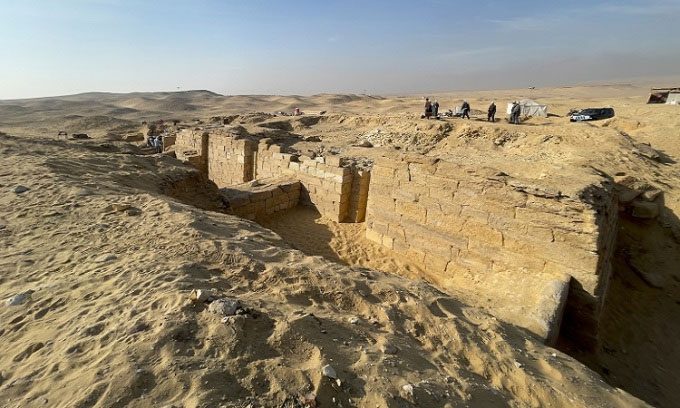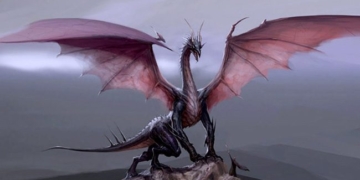Archaeologists Rediscover a Lost Tomb Containing the Intact Mummy of an Ancient Egyptian Official Who Married a Pharaoh’s Daughter
The tomb belongs to Ptahshepses, who lived approximately 4,400 years ago during the 25th and 24th centuries BCE. Researchers from the Czech Institute of Archaeology at Charles University in Prague reported that they located the tomb near the archaeological sites of Abusir and Saqqara in 2022, utilizing satellite imagery and reviewing old maps. Excavation work commenced on-site this year, Newsweek reported on September 29.

The eastern side of the tomb rediscovered after nearly 160 years buried under desert sand. (Photo: Czech Institute of Archaeology).
The tomb was partially exposed nearly 160 years ago by French scholar Auguste Mariette, who discovered a beautifully decorated false door with a supporting beam. However, shortly after this discovery, the tomb was lost beneath layers of desert sand.
The false door and supporting beam contain information about Ptahshepses’s official career, recounting his educational journey at the court of Menkaure, an ancient pharaoh born in 2532 and who died in 2504 BCE. According to inscriptions on the false door, Ptahshepses married the daughter of Userkaf, a pharaoh who ruled briefly in the early 25th century BCE.
“The introduction reveals that Ptahshepses was the first non-royal official in Egyptian history allowed to marry a princess,” stated the Czech Institute of Archaeology. “Based on the information on the supporting beam, Ptahshepses is even more remarkable as he is believed to be the one who proposed the idea of bringing Osiris, the famous god symbolizing life and death, into the Egyptian temple. Due to the political, historical, and religious significance of Ptahshepses, this tomb is one of the most notable recent discoveries in Egyptian archaeology.”
Excavations at the site revealed a superstructure measuring 41.8 meters long and 21.9 meters wide within the tomb. It includes a relatively intact cult chamber, decorated with paintings at the entrance and a long corridor. The archaeological team speculates that the tomb was once looted but still retains some burial goods, offerings, jars, and the mummy of a fish.
Additionally, the research team found a coffin slightly ajar, containing the intact mummy of Ptahshepses inside. Anthropological examinations of the mummy have provided important new data regarding the development of mummification practices during the Old Kingdom of Egypt, which lasted from approximately 2700 to 2200 BCE.


















































